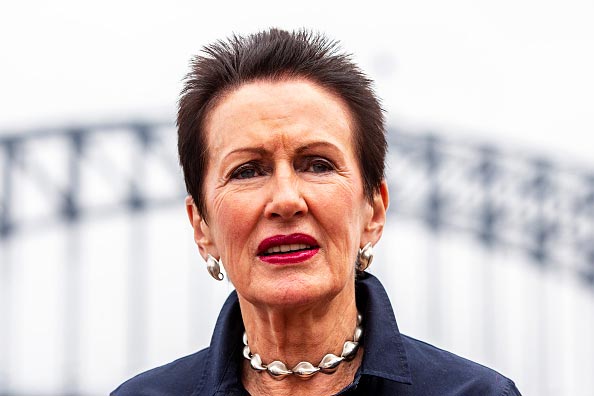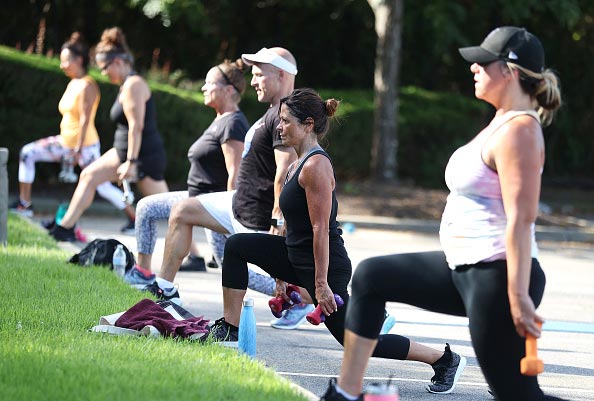The year 2020 will be remembered as a time of disruption. Government lockdowns were put in place to subdue the COVID-19 pandemic, sending the Australian economy into an official recession for the first time in 28 years. States shut borders to non-residents, enforced social distancing rules and closed non-essential services.
But as Australians spent more time at home with family (and less time in the office with workmates), the virus allowed a pause for reflection. From wearing facemasks in public places to pondering toilet paper shortages, Australians faced up to the reality that a world they once knew would never be the same again.
Golf in Australia will never be the same again. Goodbye to the good ol’ days of walking into the pro shop to pay the green fee with cash. Or heading straight for the bar to order a beer. Digital registration and QR codes appear here to stay.
Much greater emphasis is placed on personal hygiene. Hand sanitisers have become commonplace throughout clubhouses. To minimise touch points, ‘tap and go’ has flourished while cash transactions have been discouraged. How long until electronic sliding doors or turnstiles replace conventional door handles?
RELATED: The War On Golf has begun
Gone are long-held traditions such as the smorgasbord buffet and complimentary peanuts at the bar. (Australian Golf Digest can recall when a member of an exclusive Sydney club once tested the quality of complimentary peanuts. He sent a sample away and was alarmed to discover several different strains of urine on the peanuts.)
Shaking hands before and after golf has been discouraged to reduce the spread of germs. One can only wonder what type of greeting may evolve in years to come. Surely Namaste – the non-contact Hindi greeting – is better than the ‘elbow bump’ that became fashionable in 2020. Namaste makes even more sense in the clubhouse when people are eating and drinking.
Just a few years ago it would have been hard to imagine leaving the flagstick in the hole while putting. While the likes of Adam Scott embraced the official rule change on January 1, 2019, the practice has become de rigueur for amateur golfers this past year.
Due to the COVID-19 ‘pandemic’, the death of the scorecard appears imminent as golfers embrace digital technology on their phones. Apart from digital scoring for competitions, the MiScore app allows GPS distance measurements, pace of play tracking and statistical analysis.
As it turned out, Australia underwent a golf boom not seen since the heyday of Greg Norman in 1989. With more people having time on their hands, club membership witnessed a remarkable resurgence with 42,000 people joining golf clubs through October, representing a 5 per cent annual increase. The boom occurred notwithstanding strict lockdowns imposed by the Victorian Government that prevented golf there for much of the year.

‘Whenever somebody like Clover Moore attacks golf for inefficient use of recreational space, it’s really an attack on conservative values and the traditional Australian way of life.’
Males aged 20-49 were responsible for 75 per cent of membership growth, according to figures compiled by Golf Business Advisory Services. Men represented 88 per cent of this membership growth. Women aged 50-plus made up more than 56 per cent of female growth.
Yet still the ‘War On Golf’ continues. Increasingly, inner-city activists are targeting metropolitan public courses to be reduced in size or closed entirely to make way for alternative recreational usage. Melbourne’s Northcote Golf Course is under siege with local Labor MP Kat Theophanous proposing to eliminate three of its nine holes in favour of creating a new park. Along with the Albert Park, Malvern Valley and Cheltenham courses, Northcote opened up as a public park when golf was banned during Melbourne’s lockdown.
RELATED: Moore Park ‘win’ for golf
Lord Mayor of Sydney Clover Moore wants to halve Moore Park Golf Club’s 18 holes to create more public parkland. In October, Sydney City Council voted 8-2 to transform Moore Park into a nine-hole course before the threat of downsizing appeared to be staved off come December. But for how long? In the shadow of the Sydney Cricket Ground, Moore Park covers 45 hectares and is the city’s closest course to the CBD. Moore Park hosted 90,000 rounds in the past year while its driving range is popular among serious golfers and beginners.
The local area already has plenty of public parkland. Across Anzac Parade from Moore Park, Centennial Park has 189 hectares of open space with footpaths, cycle tracks, gardens and wetlands, barbecues and cafés. Nevertheless, Moore – the longest-serving Lord Mayor of Sydney since 1842 – is determined to push ahead because “by 2040, there will be up to 90,000 additional people living in Zetland, Redfern and Waterloo within two kilometres of Moore Park”.
Multi-purpose golf clubs the way of the future
As we discovered during the COVID-19 lockdowns, urban Australians desire recreational green space to escape the confines and pressures associated with modern-day living. For a golf club on public land to consider its land sacrosanct and for the sole purpose of playing golf seems rather selfish.
In recent years Golf Australia, the national governing body, has done an admirable job in promoting golf as an inclusive sport for women, juniors and disabled golfers. However, golf clubs have been rather exclusive to non-golfers. Golf doesn’t engage the general community as well at it should, hence a backlash by non-golfers – many of who presume golf is an anachronistic bastion for crusty, old, white males.
A way forward is to make more of an effort to share our golf courses with the wider community. New South Wales Minister for Planning and Public Spaces, Rob Stokes, has expressed a desire for golf courses to be multi-purpose facilities and more inclusive of non-golfers. He appears to be a rare advocate for golf in the halls of parliament around the country.
“We don’t need to remove golf courses. We just need to tweak them to provide more benefit to a greater number of people,” Stokes told the Sydney Morning Herald in 2019.
Stokes cited having bike paths and running tracks on the edges of golf courses as a win-win outcome. “We need to think of ways to include the community rather than exclude while at the same time meeting the needs of the golfing community.”
With this in mind, Australian Golf Digest compiled a list of 21 non-golf activities [see below] that could be undertaken on public courses without clubs suffering major disruption. Many activities could generate much-needed cash flow and take the pressure off traditional revenue steams upon which golf clubs derive income.
As Stokes alluded, the extremities of a golf course could be much better utilised. For instance, Tai chi, martial arts and exercise classes for seniors could be conducted on safe, underused parts of a course. With parks and beaches at a premium, golf courses are an ideal environment for personal trainers to conduct one-on-one or group tuition. Outdoor fitness equipment could be placed around the perimeter of a course.
A community garden also makes sense, using the expertise of greenkeeping staff to grow herbs and vegetables for local residents and restaurants. Golf clubs could even operate their own pop-up florist stalls.
With an abundance of flora and fauna, it stands to reason golf courses should be an educational tool for children and adults. Clubs could maintain breeding boxes for native birds. (For example, Strathfield Golf Club in Sydney has boxes for the red-tailed parrot around its fifth hole.)
A FOGO (Food Organics, Garden Organics) waste centre would also curry favour with local communities. So, too, a bottle recycling depot where people can ‘return and earn’ money.
A golf course would make a perfect setting for a cross-country running trail or paintball action theatre. An archery field, bocce court or FootGolf would also be easy to set up. Innovative clubs could have their own night market or hawker centre with international cuisine.
Traditionally, golf clubhouses have hosted birthday parties and wedding receptions to bolster revenue. In future, they should be homes for local sporting teams to congregate after a match. Clubhouses could accommodate women’s groups, such as patchwork quilters who often use cheap local halls with poor heating/cooling to reduce costs.
In the instance of Moore Park Golf Club, an on-course café with ample seating could refuel golfers and allow local residents to enjoy a coffee in tranquil surroundings. We could learn a lot from golf in tropical south-east Asia where courses have gazebos placed strategically every few holes, serving refreshments along with an opportunity for a toilet stop. For some reason, western countries ventured down the path of mobile drinks carts hovering around a course with the associated dangers.
Becoming multi-purpose facilities offers a silver lining for golf clubs. Many public golf courses are in urgent need of funds. By engaging with the community they are more likely to win favour from government and receive grants that could improve dilapidated or non-existent infrastructure (such as an automated irrigation system, boundary fencing or kitchen upgrades).
Becoming a pillar of the local community
A number of private clubs – which own their own land – have already taken the step of offloading a parcel of land to secure their financial future. However, golf clubs on public land don’t have ownership of their greatest asset: the golf course.
They must begin to think outside the square and consider how they can better engage with the wider community. It’s not about bending over backwards to appease the local community. It’s about becoming a pillar of the local community.
Besides, sacrificing part of a golf course isn’t necessarily a bad thing. Many courses would benefit from holes being reconfigured by an accomplished golf architect. The par and length may change. But would you rather play a mediocre par-70 layout or a ripping par-65 course? That’s precisely what has happened in Melbourne at the recently revamped Sandringham Golf Links under the supervision of Ogilvy Cocking Mead.
Globalists such as Clover Moore are the real threat facing golf clubs in the 21st century. Preaching ‘sustainability’, they would be happy to eradicate golf from the planet. Whenever somebody like Moore attacks golf for inefficient use of recreational space, it’s really an attack on conservative values and the traditional Australian way of life.
Golf is seen as a soft target. A turf cricket pitch/oval may be used by 22 players (plus two umpires) once a week on a Saturday. The difference is that football is usually played on the same oval during winter. Globalists haven’t got the balls to take on cricket and the football codes.
But what other sports should know is that Moore and her ilk will turn on them when given a chance. And that’s why golf is so important.

21 non-golf activities for public golf courses
Archery field
Breeding boxes for native birds
Bocce court for seniors
Bottle recycling depot
Children’s playground
Community garden for local residents and restaurants
Cross-country running trails
Cycling tracks
Exercise venue for seniors
FOGO (Food Organics, Garden Organics) waste centre
FootGolf facility
Meeting place for local women’s groups (patchwork quilters)
Night market or hawker centre featuring international cuisine
Off-leash dog park
Outdoor fitness equipment stations
Paintball action theatre
Pop-up florist stall
Quiet place to read a book under a big tree
Tai chi or martial arts classes
Training zones for personal instructors
Walking and running paths




